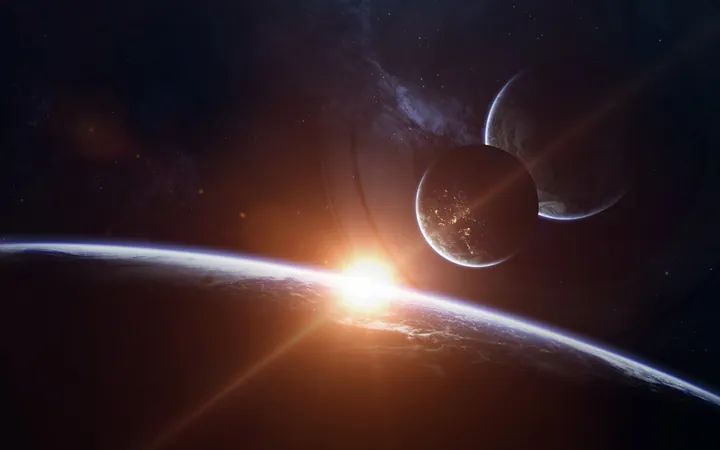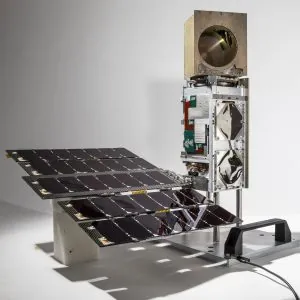
Astronomers Unveil Tiny New Moon Orbiting Uranus – A Stunning Discovery!
2025-08-22
Author: Liam
A Game-Changer in Uranian Exploration!
Using the cutting-edge James Webb Space Telescope (JWST), scientists have made an exciting breakthrough: a previously unknown moon orbiting Uranus has been discovered! This incredible find boosts the tally of confirmed moons around the ice giant to a remarkable 29, shedding light on the fascinating dynamics of this often-neglected planet.
Meet S/2025 U 1: The Newest Member of the Uranian Family
This newly identified moon, labeled S/2025 U 1, is a diminutive celestial body, measuring about six miles (10 kilometers) in diameter. What makes this discovery even more astounding is that S/2025 U 1 holds the title of the smallest moon ever discovered around Uranus. Previous missions—including Voyager 2’s historic flyby in 1986—missed this tiny satellite due to its faint brightness and size.
A Close Encounter with Uranus' Inner Rings
Located near the planet’s inner rings, S/2025 U 1 orbits between two known moons, Ophelia and Bianca—each significantly larger at 13 miles (43 km) and 40 by 29 miles (64 by 46 km), respectively. This tiny moon lies approximately 35,000 miles (56,250 kilometers) from the center of Uranus, traversing within the planet's equatorial plane.
Revolutionizing Our Understanding of Uranus!
The implications of this discovery extend far beyond just counting moons. With the help of JWST's sophisticated imaging technology, astronomers are now equipped to delve deeper into the mysteries of the outer solar system. The detection of such a small moon in such proximity to Uranus' inner ring system showcases JWST's extraordinary capabilities.
Uranus: A Planet with a Unique Character
As the seventh planet from the Sun, Uranus is notorious for its extreme axial tilt, causing it to roll along its orbit like a giant bowling ball. Its striking cyan hue is a result of its atmospheric composition, primarily hydrogen, helium, and methane.
A Literary Legacy for Uranian Moons
Uranus sticks to a unique naming tradition for its moons, choosing names from the literary realms of Shakespeare and Alexander Pope instead of mythological figures. The addition of S/2025 U 1 invites astronomers to consider fitting names from the works of these iconic writers, enriching the cultural tapestry of the Uranian moon family.
The Future Looks Bright!
With new discoveries like S/2025 U 1, the prospect of unraveling the secrets of Uranus and its moons is more tantalizing than ever. As interest in our solar system grows, who knows what other mysteries lay waiting in the shadows of these distant worlds?









 Brasil (PT)
Brasil (PT)
 Canada (EN)
Canada (EN)
 Chile (ES)
Chile (ES)
 Česko (CS)
Česko (CS)
 대한민국 (KO)
대한민국 (KO)
 España (ES)
España (ES)
 France (FR)
France (FR)
 Hong Kong (EN)
Hong Kong (EN)
 Italia (IT)
Italia (IT)
 日本 (JA)
日本 (JA)
 Magyarország (HU)
Magyarország (HU)
 Norge (NO)
Norge (NO)
 Polska (PL)
Polska (PL)
 Schweiz (DE)
Schweiz (DE)
 Singapore (EN)
Singapore (EN)
 Sverige (SV)
Sverige (SV)
 Suomi (FI)
Suomi (FI)
 Türkiye (TR)
Türkiye (TR)
 الإمارات العربية المتحدة (AR)
الإمارات العربية المتحدة (AR)